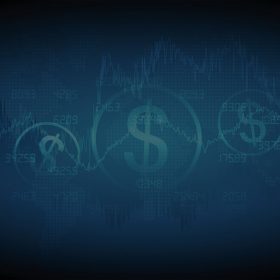The Fed and Interest Rates
By Terry Savage on September 11, 2019
The entire world is holding its collective breath, waiting to see what the Federal Reserve will do about possibly cutting interest rates at its next meeting on September 17 and 18. But as of this writing, the global bond markets are pricing in a cut of 50 “basis points” — or one-half of a percentage point. In other words, the bond market has gotten ahead of the Fed.
Despite the headlines, the Fed’s decision might not mean much to you, the average investor, mortgage-seeker or saver. That’s because with more than $20 trillion of U.S debt (IOUs represented by Treasury bills, notes and bonds) being traded in the financial markets, the opinion of the market is crucial. The 10-year Treasury yield, which is set by market trades, is the key to setting your mortgage rate. The short-term Treasury bill rate is key to setting your savings account rates.
The rates set by the Fed only determines the profitability of the banks — who borrow and lend to each other in the overnight “fed funds” market, at a rate guided by the Fed. The market rate is the rate at which real money agrees to change hands.
Why the Fed is Important
The “mandate” or job of the Fed is to adjust rates to keep two key economic measures steady: employment and prices. That is, the goal of the Fed is to keep the economy growing, and as close as possible to “full employment” — as well as to keep prices steady, without triggering inflation, which destroys the buying power of your dollar.
The Fed has already done a very good job of meeting those criteria. We have the lowest unemployment in decades, and inflation is almost non-existent (well, except for college prices and healthcare). So why is the Fed worried, and why are market analysts — and the president — urging the Fed to cut rates again?
The reason is simple: anticipation of a decline in future economic growth. A slowdown, or recession, could be instigated by:
—The impact of tariffs on global trade. If tariffs are passed along to consumers, spending on other goods may slow. If the costs of tariffs are absorbed by manufacturers, corporate earnings will slow — possibly triggering layoffs. And a slowdown in trade would impact the economy of our trading partners from the Eurozone to China.
—The changing role of the consumer. In the United States, the consumer accounts for 70 percent of the economy. Any hint of layoffs or job insecurity because of lower corporate profits could impact consumer confidence, triggering a spending pullback — and a recession
—History. Simply put this has been the longest economic expansion in U.S. history, starting in 2009 after the Fed and other central banks flooded the world with “liquidity.” But we are in uncharted territory now, and there is no law — only historical precedent — that says economic expansions can’t continue past a certain point.
The dilemma facing the Fed is whether to cut rates in anticipation of a slowdown. That might seem wise, except for the fact that interest rates in the United States are already at historic lows. If the Fed cuts rates now, while the economy is still doing reasonably well, what “ammunition” will it have to cut rates if the economy truly slows?
How low could rates go? Well, take a look at Europe, which currently has nearly $16 trillion of government bonds outstanding at negative interest rates! That means bond-buyers are actually paying governments to hold their money and keep it safe. And those low rates haven’t done much to stimulate the Eurozone economy toward growth.
Fed Chairman Jerome Powell recently commented that the Fed typically cuts by about 550 basis points — or five and a half percentage points — once it starts aggressively trying to keep a recession from getting worse. With rates currently around 2 percent, the Fed would have a tough time counteracting a severe economic slowdown.
And then there’s the political component. A rate cut now would cushion the impact of tariffs on consumers, keeping the economy growing. The Fed is supposed to be independent of politics.
Pity the Fed chairman. Both the markets and politicians are trying to push him into rate cuts. But a cut now might create a larger problem in the long run. That’s Powell’s problem. And that’s The Savage Truth.




